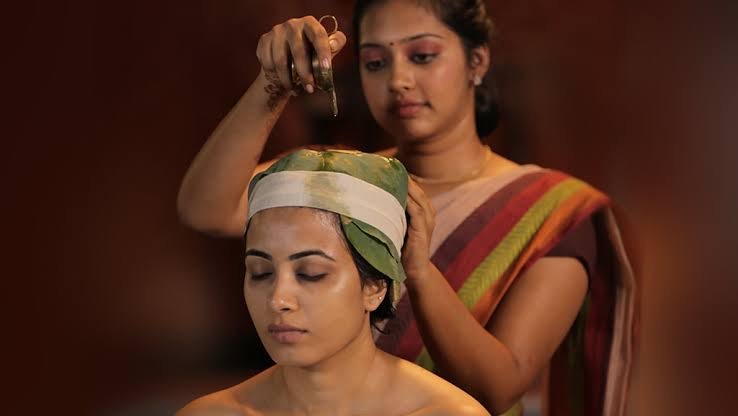Thalapothichil

Thalapothichil is an Ayurvedic therapy that involves the application of herbal paste on the scalp, followed by bandaging. The term “Thalapothichil” is derived from two words: “Thala” meaning head and “Pothichil” meaning covering. This procedure is a variation of the traditional Shirolepa (application of medicated paste to the head) and is considered a therapeutic treatment in its own right due to its numerous health benefits.
This process is known for its calming and soothing effects on both the body and mind. It helps stabilize the nervous system, inducing a deep sense of relaxation. The treatment balances all three doshas, with a predominant focus on reducing Pitta dosha, but also addressing issues related to Vata and Kapha based on the type of medication.
Therapeutic Benefits of Thalapothichil:
Thalapothichil offers a range of health benefits and can be particularly helpful for treating:
- Autism
- ADHD (Attention Deficit Hyperactivity Disorder)
- Chronic headaches
- Insomnia
- Seizures
- Premature greying of hair
- Hair fall
- Dandruff
- Anxiety
- Depression
- Mental retardation
- Hypertension
- Dermatitis of the scalp
- Stress management
Procedure for Thalapothichil:
- Purvakarma (Pre-Procedural Routine): Before the procedure, the patient is advised to trim their hair. A gentle head massage using prescribed oil is performed to prepare the scalp.A half-inch-wide band is tied around the patient’s forehead, just above the eyebrows, to prevent any of the medicinal paste from dripping down to the eyes during the procedure.
- Pradhana Karma (Main Procedure): The therapeutic herbal paste is then applied to the top of the head (vertex) and is gradually spread in sections: the right side, the back, the left side, and finally, back to the center of the head evenly across the entire scalp about one finger’s width (approximately 1 Angula). A Kadali Patra (banana leaf) or Kamala Patra (lotus leaf) of suitable size is heated over a flame until it softens to cover the herbal paste, and the leaf is then tied around the head with a cotton thread, just above the ear. A small hole is made at the center of the leaf, creating a shallow depression. Approximately 2-5 ml of warm oil is poured into this depression, helping to maintain the moisture of the paste. The oil is replenished as needed during the entire procedure. The herbal paste is left on the scalp for around 90 minutes (one yaama)
Paschat Karma (Post-Procedural Measures): The leaf covering is removed, and the herbal paste is gently wiped off. To conclude the procedure, Shiro Abhyanga (a head massage with oil) is performed. The patient is later advised to take a bath with warm water.


